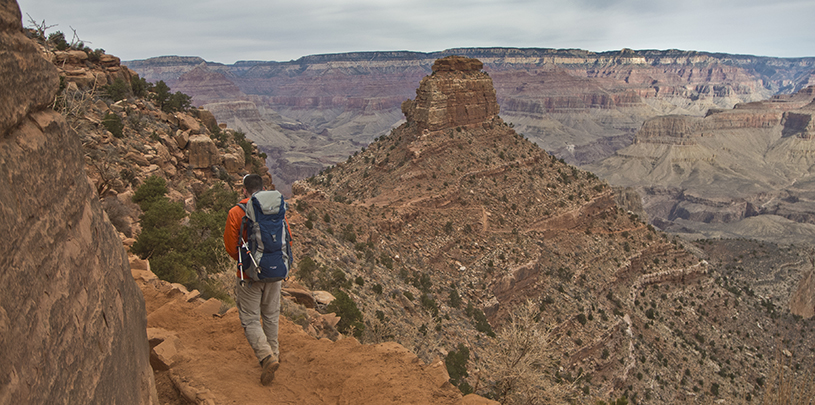
 by Roger Clark, Grand Canyon Director
by Roger Clark, Grand Canyon Director
“Let’s be clear: Creating a buffer around the Grand Canyon is not a federal land grab,” writes Arizona Republic columnist Linda Valdez. Her recent “Our Grand Canyon deserves protection” column continues: “This is about adding protection to…our state’s signature landmark.”
Once again, Arizona’s defining feature is under siege by the same kind of backers that pushed for damming the Colorado River inside the Grand Canyon in the 1960s. Today, another kind of tomfoolery threatens the Grand Canyon’s tributaries and headwaters. At stake is the prospect of re-opening public lands surrounding the national park to new uranium claims if a temporary 20-year ban is allowed to expire, or is overturned by court challenges from the mining industry.
Industry forces, including uranium mine owners and the National Mining Association, have aligned to launch a campaign to misinform and undermine widespread voter support for further protecting the Grand Canyon.
Over the past several weeks, a policy brief prepared by the mining-friendly Arizona Chamber and Prosper foundations, has been passed out at events and meetings with elected officials. It argues against creating a new national monument to further protect Grand Canyon National Park from uranium mining on public lands that surround—and drain directly into—the canyon.
The policy brief makes a number of inaccurate assertions, erroneously stating that the monument “would designate another 1.7 million acres of Arizona as federal land…[and that]…The Department of Interior would obtain exclusive control of the area within the monument designation.”
The fact is that the land in question is already federal land. All 1.7 million acres are currently managed by the U.S. Forest Service and the Bureau of Land Management. These agencies would continue to manage the monument after it is designated, under the same federal and state rules that apply now, with the exception of the 1872 Mining Law.
The Grand Canyon needs a protective buffer to prevent uranium claims from being validated on public lands that surround—and drain directly into—Grand Canyon National Park and to prevent any more uranium mines from contaminating springs and streams within the canyon’s watershed.
Creating a national monument around the Grand Canyon National Park is not a federal land grab.
“That’s why,” Linda Valdez concludes, “President Barack Obama should permanently prevent new uranium mining around the park using the same executive authority under the Antiquities Act that Theodore Roosevelt used to bring the Grand Canyon itself under public protection.”
In 1975, when some proposed damming the Colorado River and filling up part of the Grand Canyon like a bathtub in order to generate electricity, clearer heads prevailed. Arizona’s Senator Barry Goldwater joined Congressman Morris Udall in passing the Grand Canyon National Park Enlargement Act.
That bipartisan federal legislation prevented the U.S. Bureau of Reclamation from building two new dams in the canyon’s upper and lower gorges. It expanded the national park’s boundaries into pre-existing federal lands and declared “that the entire Grand Canyon … including tributary side canyons and surrounding plateaus, is a natural feature of national and international significance.” But it fell short of protecting the Grand Canyon “in its entirety,” as Congress had intended.
It is, once again, time to stand up to this most recent assault by those who would discount the Grand Canyon’s great gift to our state and our nation. As former Colorado Senator Mark Udall, son of Mo Udall says, “Now we must prevail upon the president to permanently protect the Grand Canyon’s sacred waters.”
Groundwater pumping at a uranium mine near the Grand Canyon will affect the canyon's springs, scientists says.
Read MoreArizona Governor Katie Hobbs is the latest elected official to call for an environmental review of Pinyon Plain uranium mine.
Read MoreHow does Colorado River water get divvied out to Colorado, Utah, Arizona, New Mexico, Nevada, California, Wyoming, Native American tribes, and Mexico?
Read More